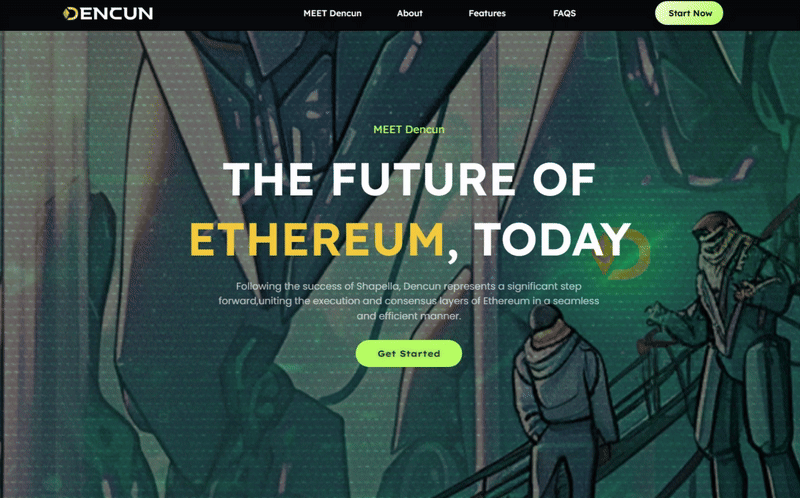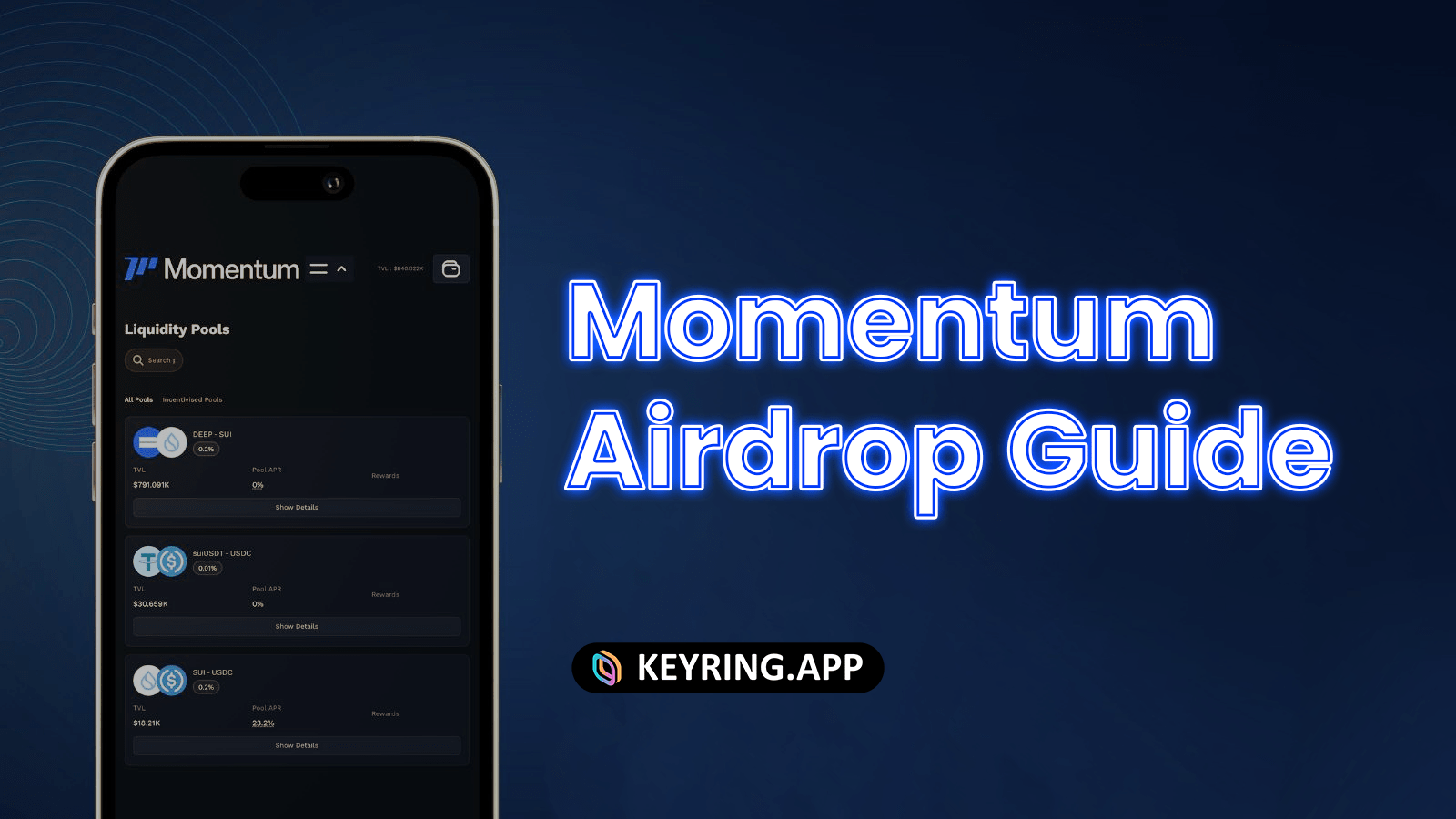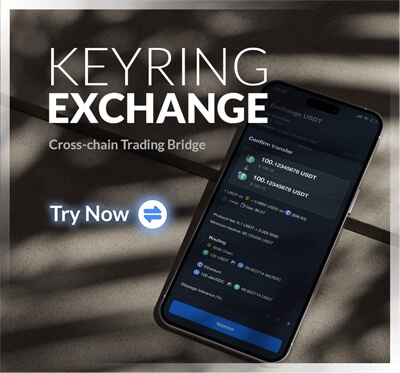
Dencun Upgrade- A Big Step for Ethereum!
Ethereum has announced the launch of the Dencun Upgrade, and soon enough, it is poised to become a significant catalyst for the development of the Ethereum network in particular and blockchain technology in general.
Let’s explore which projects stand to benefit the most from the Dencun Upgrade.
What is Dencun Upgrade?
Dencun
Dencun is a combined word that refers to the Dencun upgrade of Ethereum, which is also known as Cancun-Deneb. The word Dencun is formed by joining the last syllables of Cancun and Deneb, which are the code names for the execution layer and consensus layer upgrades, respectively.
Cancun is an update to Ethereum’s execution layer, while Deneb is an update to Ethereum’s consensus layer. Together, they aim to make Ethereum more scalable, secure, and sustainable.
The Dencun upgrade is a major update to the Ethereum network that will improve its scalability, efficiency, and security. It will enable a feature called proto-danksharding, which will allow large data packets to be stored on the network and accessed by layer 2 solutions.
This will help reduce the transaction fees and congestion on the Ethereum blockchain. The Dencun upgrade will also include several other changes to the consensus and execution layers of Ethereum, such as new opcodes, beacon block root access, and validator management improvements.
The Dencun upgrade is expected to go live on the mainnet in the second quarter of 2024, after being tested on the Goerli, Sepolia, and Holesky testnets.
Upgrade Specification
The Dencun upgrade combines changes to both Ethereum’s consensus and execution layers. The full list of protocol changes can be found in EIP-7569. For reference, they are:
- EIP-1153: Transient storage opcodes
- EIP-4788: Beacon block root in the EVM
- EIP-4844: Shard Blob Transactions
- EIP-5656: MCOPY – Memory copying instruction
- EIP-6780: SELFDESTRUCT only in same transaction
- EIP-7044: Perpetually Valid Signed Voluntary Exits
- EIP-7045: Increase Max Attestation Inclusion Slot
- EIP-7514: Add Max Epoch Churn Limit
- EIP-7516: BLOBBASEFEE opcode
Which project stands to benefit most from the Dencun Upgrade?
With the significant upgrade coming from the Dencun Upgrade event, which projects stand to benefit the most from this event?
Layer 2
Within the context of Dencun, Layer 2 is poised to be the group that will benefit the most.
At the core of Dencun, EIP-4844 directly reduces L2 transaction costs by lowering gas fees from cheaper storage. According to @pseudo, EIP-4844 aims to bring down the transaction costs of Layer 2 rollup protocols to below $0.01 USD, offering substantial advantages such as attracting a large user base and capital influx into L2 protocols, notably for popular activities like Airdrops.
Here are some projects that stand to benefit:
Arbitrum
Arbitrum is a leading Layer 2 project in the market. It aims to support Ethereum by reducing network load and transaction costs while maintaining scalability.
Among L2 projects, Arbitrum leads in Total Value Locked (TVL) with $1.722 billion in assets on the protocol. Major names such as GMX, Uniswap v3, Radiant Capital, and Pendle show strong development on the Arbitrum platform.

The proposed EIP-4844 helps reduce costs for Layer 2 rollup projects, including Arbitrum. Additionally, the launch of Arbitrum Stylus contributes to the ecosystem’s goal of reducing fees to “0.”
Optimism
Optimism is an L2 scaling solution that enables faster Ethereum transactions with lower gas fees and scalability for high-performance dApps.
Currently, promising projects like Base and opBNB, built on the OP Stack, gather on the Optimism network. The reduction in L2 fees attracts users from Ethereum and other Layer 1 projects, leading to increased transaction volume.
The completion of Dencun is expected to fuel the development of the Optimism ecosystem.

In general, Layer 2 projects are poised to benefit. Notable Layer 2 projects without token launches yet, such as zkSync Era and Starknet, are garnering significant community attention.
Lido Finance
Lido is a platform that allows users to convert their Ethereum (ETH) into a wrapped token called stETH. They can use stETH to participate in lending and liquidity activities on the platform.
Lido provides an opportunity for users to contribute their ETH to help maintain the Ethereum network, and in return, they receive stETH as a reward.
Currently, Lido Finance maintains a dominant position with 32.2% of the total ETH staked on the protocol, according to Dune Analytics. With only 22.43% of ETH staked out of the total supply, it is clear that Lido could attract more users for asset storage, especially with the Dencun upgrade.

Lido remains the number one LSD protocol.
LSDfi
Lybra Finance
If LSD benefits from Dencun, it is natural that a smaller piece within it, LSDfi, will also enjoy the same advantages.
The Lybra protocol is an advanced DeFi platform on the Ethereum network, allowing users to send ETH and create the stablecoin eUSD without incurring any fees or interest.
The project provides an interest-bearing stablecoin, eUSD, to ensure security and stability. With an APY of over 7%, Lybra is quite appealing to investors looking to stake their $ETH on the platform.
Pendle
Pendle is a Yield-strategies LSDfi protocol that allows users to generate profits from staking and synthetic trading.
Pendle is developing well.
As Dencun is completed and Ethereum benefits, the demand for Staking in LSD protocols increases, and the potential for maximizing profits is also considered. With Pendle, investors are gradually pouring assets into the protocol, as evidenced by the number of holders (Source: Dune Analytics) and steadily increasing Total Value Locked (TVL) (Source: DeFiLlama).
Notably, the total value of LSDs on the Ethereum network has surpassed $20.9 billion, while the total value of borrowing and lending (TVL) for LSDfi protocols is only about $340 million, accounting for just over 1.6% of the LSDs’ TVL.

There is still much room for strong development of LSDfi, especially with Pendle.
EigenLayer
EigenLayer is a project running on the Ethereum network that allows ETH investors to participate in verifying new modules and protocols created in the Ethereum ecosystem.
This project plays a pioneering role in introducing the concept of Restaking in the Ethereum ecosystem based on Proof of Stake (POS).
The Restaking idea of EigenLayer benefits both targeted groups:
- Stakers: They receive rewards from staking ETH and rewards from the service.
- Dapps: They inherit the security features of Ethereum without incurring high fees.
EigenLayer is becoming a relatively “hot” name for the Airdrop community. Refer to this article for more information: Opportunities to receive Airdrop when experiencing the Eigen Layer Mainnet project.
Maverick Protocol
Maverick Protocol is an AMM DEX protocol on both the Ethereum and zkSync Era networks. This project was recently listed on the Binance Launchpool in June this year.
Maverick Protocol stands out for optimizing capital profits and allowing liquidity providers to bet on price direction during the fee collection process.
Currently trading on Binance at $0.2297, MAV token has not undergone any significant push since its listing on Binance and is still in the accumulation phase.
Therefore, the expectation of a price push for MAV at the time of the completion of the Dencun upgrade is entirely feasible.
>> How to Complete the Venom Testnet Campaign and Claim Your Free NFTs. <<
>> Linea Faucet 0.5 ETH – Build on Linea Network with Consensys. <<
CLMM DEX and LPDfi
CLMM, or Concentrated Liquidity Market Maker, focuses liquidity within a specific price range. This allows Liquidity Providers (LP) to adjust their liquidity provision at selected price levels more flexibly. CLMM is considered an upgrade over AMM DEX, enabling LPs to use capital more flexibly.
Additionally, the emergence of LPDfi aims to address the drawbacks of CLMM.
Rather than having to manually perform liquidity addition, users can trust LPDfi projects, and these protocols will automatically handle it for them. This allows users to optimize profits while ensuring their assets are not exposed to much risk.
As L2 fees decrease, DEX protocols stand to benefit from increased capital inflow, and incentive programs are also enhanced.
In the context of decreasing trading volumes on centralized exchanges (CEX) and user migration, this is an opportunity for DEX, typical examples being risk management and profit optimization models such as CLMM DEX along with LPDfi, to potentially hope for a “mini trend” post Dencun.
Some noteworthy projects: GMX, Timeless, Logarithm Finance, Limitless, etc.
Conclusion
The Dencun upgrade of Ethereum is expected to be deployed around October this year, but many experts believe it could start in the first half of 2024 due to the delay in Ethereum’s Holesky testnet on September 16.
Currently, many projects have the potential for strong future growth, such as leading protocols in their respective fields like Lido, Lybra Finance, and Arbitrum, or projects that haven’t launched tokens yet but have garnered special attention from the community, such as zkSync, Starknet, or Logarithm.
With the positive impacts suggested by the narratives above, individuals can take note and choose the most promising projects.
EZ Wallet- Your quick access to the crypto world!
If you’re in search of a cryptocurrency wallet that allows you to swiftly generate an address and immediately dive into cryptocurrency transactions—no need for app downloads, identity verifications, or convoluted procedures, just a straightforward wallet creation for instant transactions—look no further than EZ Wallet.
EZ Wallet offers a hassle-free experience by enabling you to quickly create a wallet address. It utilizes a JSON file to store your keys directly in the device, simplifying the wallet creation process.
Here’s how to get started with EZ Wallet:
- Visit the EZ Wallet website.
- Scroll down to access the activation page.
- Unleash your inner artist and draw to create your wallet.
- Save the JSON file.
- Congratulations! You’ve completed the wallet creation process and can now seamlessly start using it.



